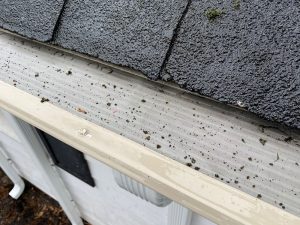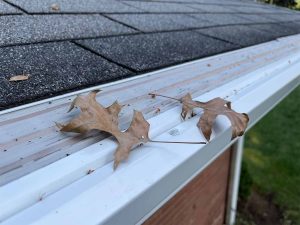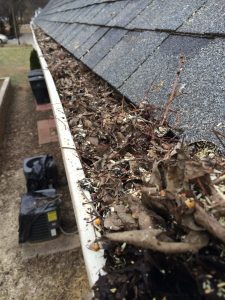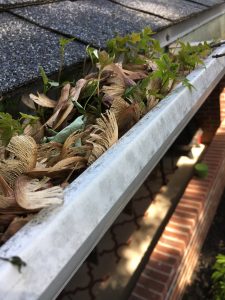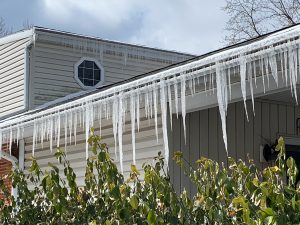After another cold and snowy winter, the last thing you probably want to do is climbing your ladder and cleaning gutters this spring. Here are several reasons why this unpopular seasonal chore is vital to the well-being of a healthy home.
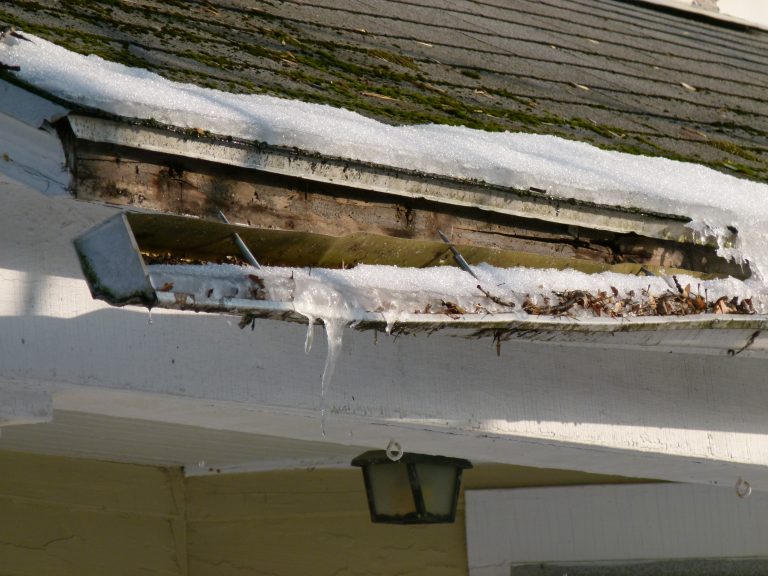
Gutters are the primary mechanism for moving water off a roof and away from a home’s foundation. This may not seem like a big deal, but one inch of rain washing off the roof of a typical 2,000 square foot home can account for as much as 1,200 gallons of water. Based on the average rainfall for many regions of the country, that adds up to nearly 32,000 gallons of water per year — enough water to fill 2 average sized swimming pools!
Clogged gutters cause flooded basements
The #1 cause of flooded basements and foundation damage is clogged gutters. When gutters clog, water is unable to flow freely, which results in the gutters filling with water and cascading over the front and back edges of the gutter.
Overflowing water will stream down a home’s exterior walls and seep into the ground below. If your home has a basement or crawl space, the water will find naturally occurring cracks in the foundation and enter the structure. If you have window wells, water can accumulate in the wells and seep through the window openings or broken seals around the window frames.
As the ground becomes saturated, excess water will pool around the foundation until the ground can absorb it. The presence of excessive moisture around a foundation can lead to mold and mildew problems, which is costly to remediate, potentially hazardous to your home and health, and can adversely affect your home’s resale value.
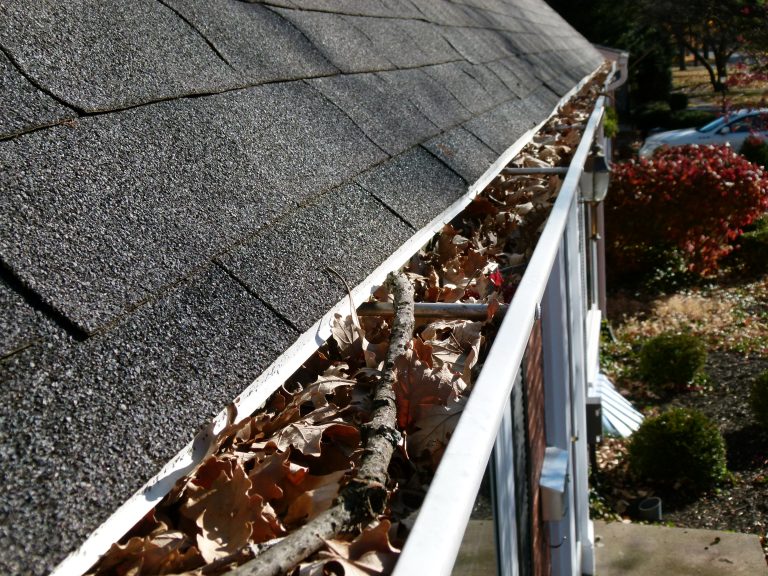
Clogged gutters cause wod rot
If left unchecked, clogged gutters can cause wood rot on your home’s facia boards, soffits and eaves. When this occurs, gutters must be removed from your home so the damaged wood can be replaced. Clogged gutters are also a popular breeding ground for mosquitoes!
The simple way to avoid these problems is cleaning gutters on a regular basis or add gutter guards that will permanently keep leaves and debris out of your gutters.
Gutter cleaning schedule
Each homeowner will have a different cleaning schedule based on the number and type of trees, and proximity of the trees to the house. In some cases, you may have to clean your gutters monthly, while other homeowners only have to do it a few times a year.
The easiest way to see if your gutters are clogged is to visually inspect them and watch what happens when it rains. If you see water spilling over the gutters, then you know they are clogged and need to take action. Check the gutters seasonally to make sure they are flowing properly.
Clean gutters in Spring and Fall
The two most important times for gutter cleaning is during the spring and fall. As trees and shrubs blossom in the spring, they drop flowers, seeds, and other organic matter that can quickly build-up in and clog your gutters. You may have to clean your gutters several times during the spring to keep them flowing properly. When leaves shed from trees in the fall, plan to clean the gutters again. It is very important that you clean your gutters before winter; otherwise, snow and ice is more likely to build-up in your gutters. Accumulating snow and ice can cause icicles to form on your gutters, and the excessive weight of the wet, compacted leaves and debris with the ice and snow can literally pull the gutters off of your home.
How do I clean my gutters?
Now that you are ready to clean your gutters, grab a stepladder or extension ladder, a 3” paint scraper, a garden hose with a high pressure nozzle, and a pair of waterproof rubber gloves. If you are using an extension ladder, invest in a ladder stabilizer from Little Giant for your multipurpose ladder or options from Werner and Ladder Max for traditional extension ladders that will keep the ladder securely positioned on the side of your home and allow you to work freely without damaging the gutters (see image below of Werner QuickClick ladder stabilizer in use).
Once the ladder is securely positioned, clean out the loose leaves and debris, and then use the paint scraper to remove smaller debris and shingle granules along the bottom of the gutter. Next, position the ladder at the high side of the gutter and wash out the gutters, working towards the downspout. Once you reach the downspout, make sure that you have removed any remaining debris from the mouth of the downspout and shoot water down the downspout to ensure that debris is not restricting water flow. If the downspout is clogged, you may need to disconnect it in order to remove the debris.
Safety first – ask the experts if you’re at risk of falling
Before scaling the side of our home and cleaning gutters, keep in mind that according to the U.S. Centers for Disease Control and Prevention, in 2011, 34,000 people were injured — requiring emergency room care — and 113 people were reported killed as a result of falling off of ladders.
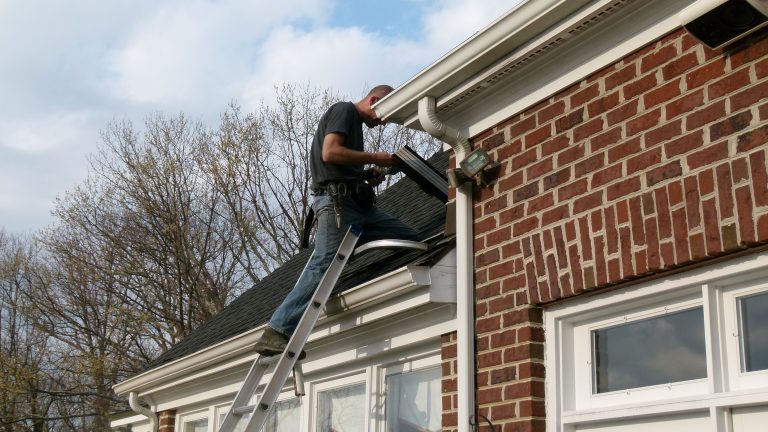
If hiring a professional seems like the more prudent way to keep your gutters clean, set-up an annual maintenance contract or consider installing gutter guards as an alternative to regular cleanings. Not all gutter guards work effectively, so it is important to select the correct style of gutter guard for your home. The quantity and types of trees in your yard, your roof’s slope, and shingle style will determine the application that is best for you. Price will undoubtedly play a factor, too. With so many products on the market, use the Internet to do your homework, ask to view the manufacturers’ warranties, and then select the solution that is best for you. Locate qualified installers in your area.
Regularly cleaning gutters or installing gutter guards will keep your gutters clog-free, prevent costly damage to your home’s exterior and interior, and increase your home’s resale value.


